The Xperia Z3 Compact is Sony’s second attempt at a premium small Android phone. Its stellar battery life, powerful processor and camera all make it a standout choice - especially at the £400 price.
Sony’s first attempt last year at a “compact” (rather than a cut-down smaller and cheaper “mini” smartphone with a poorer specification– as Samsung, HTC and others create from their flagship smartphones) was the Xperia Z1 compact. It was a fully featured phone, but its bulky, almost chubby design looked dated quickly.
Sony is having its struggles in the smartphone sector – but that hasn’t interfered with its ability to make an excellent product.
Compact by name, compact by nature
A year later, the Z3 Compact’s design is a big improvement. The 4.6in screen fills most of the front of the phone with small bezels at the sides, top and bottom. It is 8.6mm thick (0.9mm thinner than the Z1 Compact) and weighs 129g. For comparison the 4.7in iPhone 6 is 6.9mm thick and weighs the same 129g, while the the iPhone 5S is 7.6mm thick at 112g.
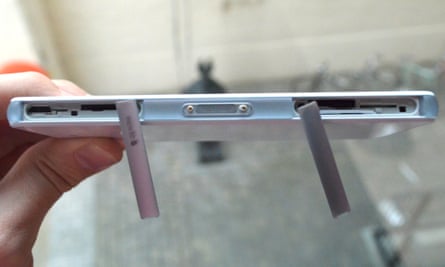
The rounded transparent plastic sides feel solid, while the whole phone is easy to fit in the hand and use one-handed – something that has been lost in the pursuit of larger and larger screen sizes.
The phone feels hollow when tapped, but is built well with little twist or give in the body. It is also waterproof to IP68 standards - that is, to a depth of 1.5m for 30 minutes; small fiddly doors protecting the ports. Only the headphones port is exposed.

The 4.6in screen has a 720p resolution, giving it a pixel density of 319 pixels per inch (ppi), slightly below Apple’s iPhones with 326ppi, but significantly lower than the 424ppi of Sony’s larger 5.2in 1080p Xperia Z3. Regardless, the screen is crisp, colourful and bright with wide viewing angles - and the PPI count means it qualifies as “retina”, to use Apple’s phrase: at normal viewing distance, you won’t see the individual pixels.
The front-facing stereo speakers are loud, but distort slightly at maximum volume.
Specifications
- Screen: 4.6in full HD IPS LCD
- Processor: 2.5 GHz quad-core Qualcomm Snapdragon 801
- RAM: 2GB of RAM
- Storage: 16GB plus microSD card slot
- Operating system: Android 4.4.4 “Kitkat”
- Camera: 20.7MP rear camera, 2.2MP front-facing camera
- Connectivity: LTE, Wi-Fi, NFC, Bluetooth 4.0 with BLE and GPS
- Dimensions: 127 x 64.9 x 8.6 mm
- Weight: 129g
The power of a flagship smartphone in a smaller body
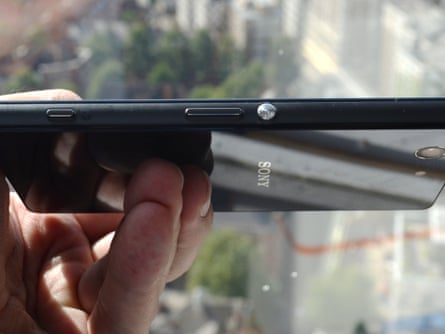
The Z3 Compact will handle anything from graphically intensive games to video and image editing. It has the same processor and power as its bigger brother the Xperia Z3, but 2GB of RAM rather than 3GB. When you tap an app icon to launch it, there’s none of the lag that you can see on older or cheaper, underpowered phones; the apps start loading at once.
Effectively, it’s the same as most of the other flagship Android smartphones, and considerably more powerful and faster than any of the “Mini” variants from HTC, Samsung and LG.
Sony’s built-in noise-cancelling technology is also as effective as most dedicated active noise-cancelling headphones costing over £100, though it requires a special headset – costing £51 – to use.
As with the Z1, Sony’s focus is on extended battery life. Without battery saving features the Z3 lasted two and a half days of use, with push email, hundreds of notifications, three hours of browsing and three per day of music streaming over Bluetooth, and 30 minutes of gaming.

In fact the Z3 Compact lasted longer than the Z3 by half a day, which makes it the longest lasting premium phone I have ever tested – and that’s without activating any power saving modes. With Stamina mode active, 85% battery lasts over 13 days of estimated use and Ultra Stamina mode extends that to 15 days eight hours.
Android mostly left alone
The Z3 Compact’s software is identical to the Z3, with Sony’s small additions to standard Android including themes and the power-saving modes.
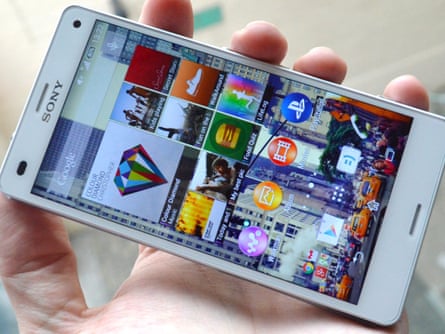
It includes Hi-Res audio support and compatibility with the Remote Play Android apps for PlayStation 4 gaming, although the small screen may make playing games less satisfying. The app was not available for testing at the time of this review.
Camera
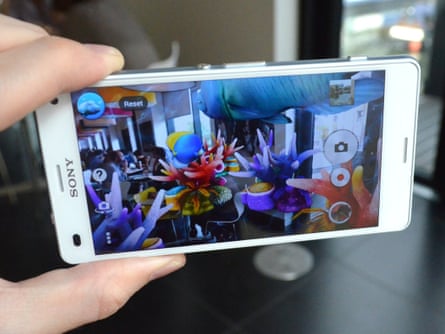
The camera is the same as the Z3: Sony’s excellent 20.7-megapixel sensor, which is one of the best camera phones available. The smaller screen makes lining up the shot slightly more difficult, but the dedicated camera shutter is excellent.
The camera lens is also positioned closer towards the centre line of the phone, making it easier to take photos without blocking the lens with a finger.
Price

The Xperia Z3 costs just over £400 without contract in black, white, bright green and luminous orange, making it £139 cheaper than the iPhone 6, but approximately £50 more than the HTC One Mini 2.
Verdict
The Z3 Compact is the best small Android smartphone available. It is light, easy to hold and use and has all the power of a full-sized flagship phone with fantastic battery life.
It has fiddly waterproof doors, but a great camera and a decent screen. It blows any smaller Android handsets like the “mini” variants of the HTC One and Galaxy S5 out of the water.
It is a harder sell against the iPhone 6, which has stronger name recognition, but those looking for a smaller, more compact Android phone that is every bit a flagship phone but not 5in or bigger finally have a phone worth buying.
Pros: compact size, waterproof, great battery life, great camera, built-in noise cancelling tech, PS4 Remote Play support
Cons: fiddly doors for ports, no fingerprint sensor, no wireless charging built-in, thicker than some competitors
Other reviews
Sony Xperia Z3 review: great battery life and quality camera
HTC One mini 2 review: selfie-camera ready for action
Samsung Galaxy Alpha review: a direct iPhone 6 competitor
iPhone 6 review: thinner, faster and slightly cheaper
Motorola Moto G 2014 review: the best all-round budget smartphone
Google Nexus 5 review: a flagship smartphone that costs the same as a mid-range device
HTC One M8 review: a lightning-quick, five-star phone
Samsung Galaxy S5 review: bigger, faster – but still plastic
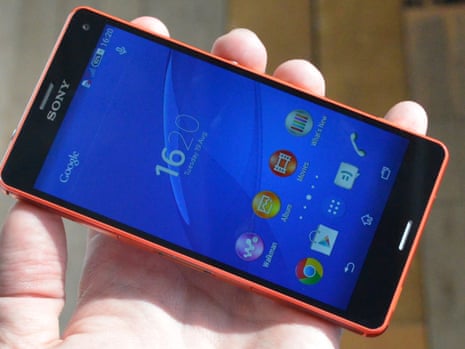
Comments (…)
Sign in or create your Guardian account to join the discussion